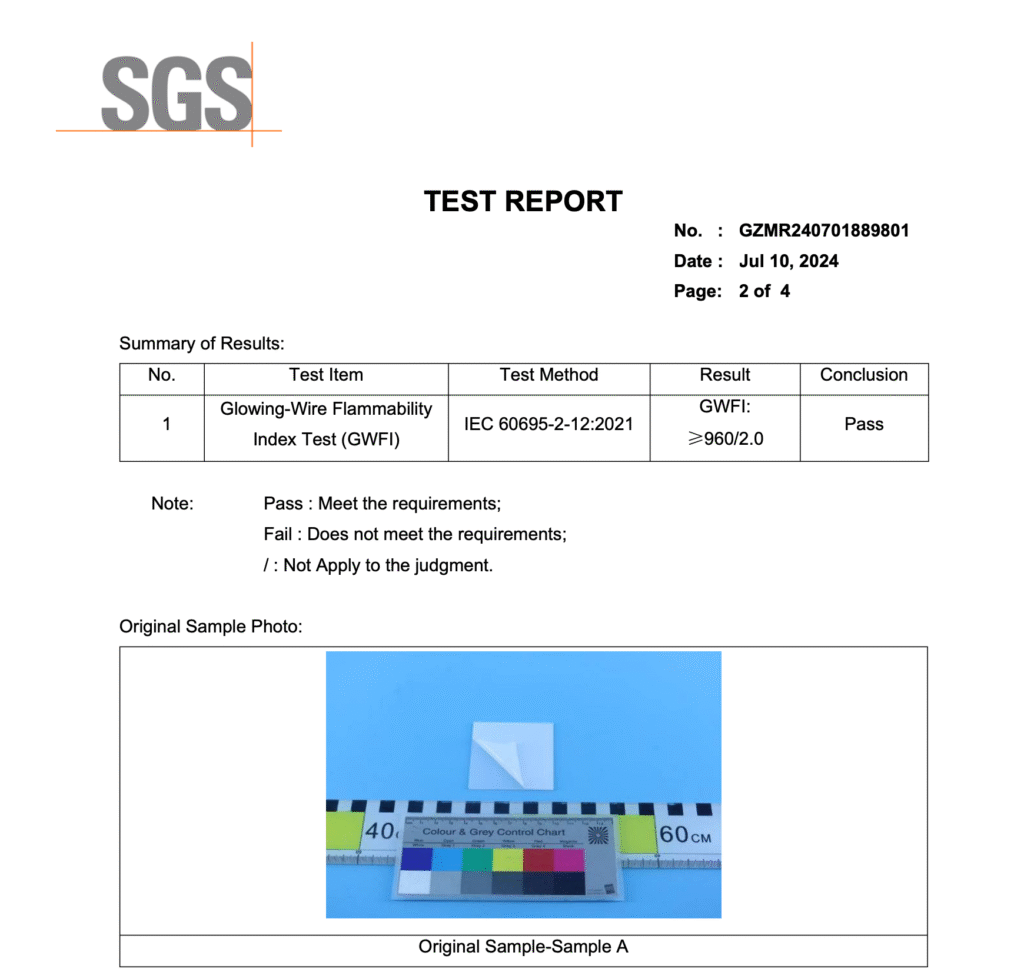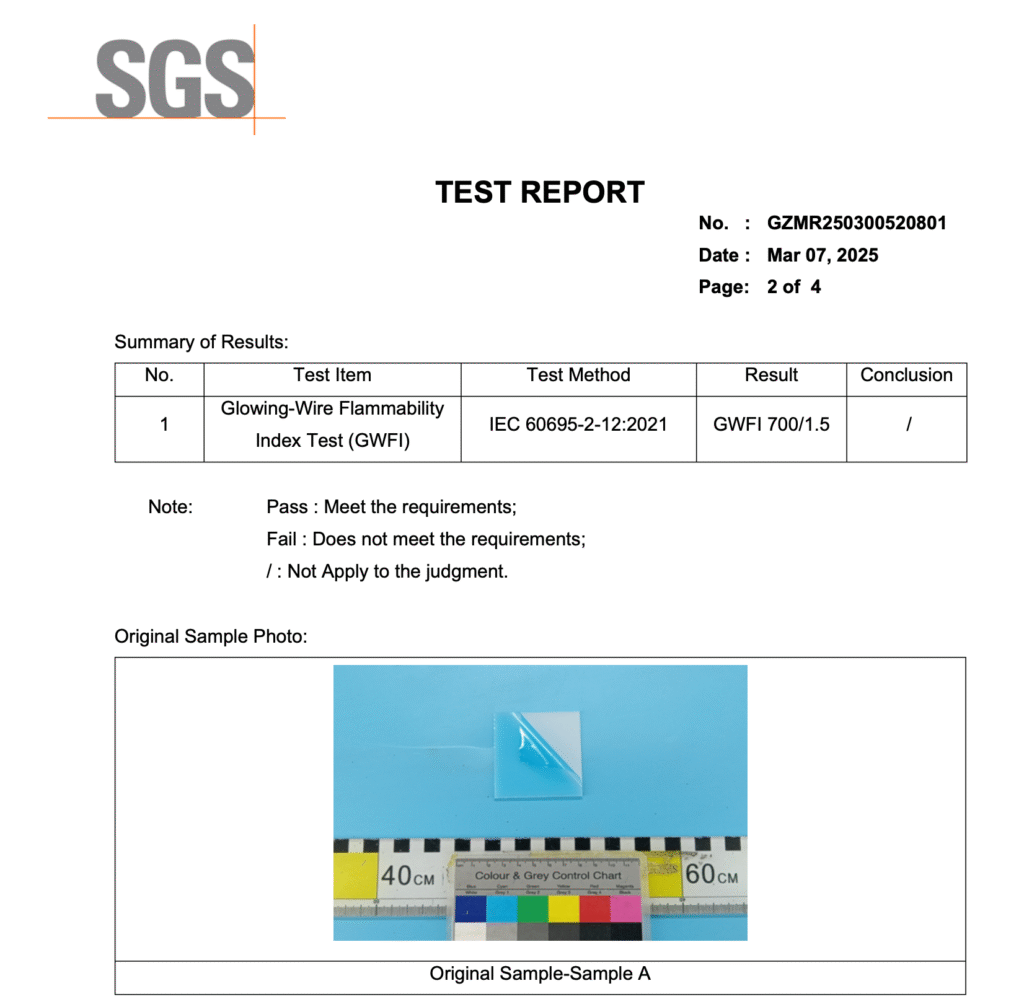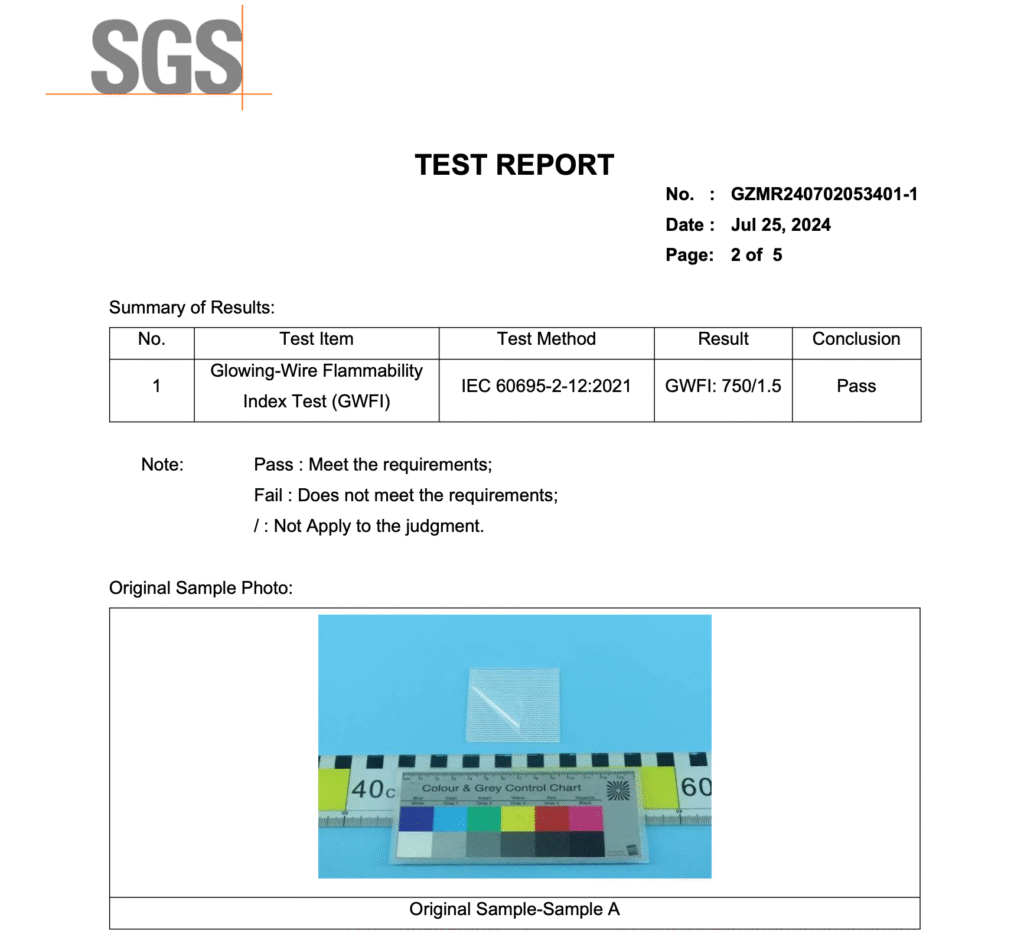The Importance of GWFI in Diffusers for Lighting: Safety and Compliance with IEC 60695-2-12
When designing LED lighting, engineers must balance optical performance, thermal stability, and fire safety. One critical indicator for safe material selection is the Glow-Wire Flammability Index (GWFI), a global standard used to evaluate a plastic’s resistance to ignition.
At Hexatron, our optical-grade materials are tested and certified to meet IEC 60695-2-12 standards, ensuring both optical excellence and compliance.
What Is GWFI?
The GWFI measures how resistant a plastic is to ignition when in contact with a heated metal wire.
This test, defined by IEC 60695-2-12, replicates conditions such as overheating or short circuits that might occur in electrical or lighting components.
A heated wire — between 550°C and 960°C — is pressed against the sample for a few seconds. The test then observes:
- Whether the material ignites,
- How long it burns, and
- Whether it self-extinguishes.
A higher GWFI indicates superior fire resistance and faster self-extinguishing, essential for luminaire safety and regulatory compliance.
Why GWFI Matters in Lighting Design
Lighting fixtures are often enclosed or installed near heat-sensitive structures. Over time, LED modules and drivers generate heat, which can affect surrounding plastics if their flammability resistance is inadequate.
Why GWFI compliance is critical:
- Prevents ignition from overheated components or electrical faults.
- Reduces fire spread, protecting ceilings, diffusers, and enclosures.
- Ensures compliance with international safety standards.
- Required for certification under CE, ENEC, and UL programs.
- Provides peace of mind in offices, homes, hospitals, and schools.
In essence, GWFI is not just a technical metric, it’s a key part of responsible, safe lighting design.
Hexatron Technologies Product Series and GWFI Ratings
Each of Hexatron’s optical materials undergoes SGS-certified glow-wire testing to confirm compliance. Below is an overview of our core product families and their GWFI levels:
1. Polycarbonate (PC) — Poly Series (GWFI 960/2)
Our Poly Series uses optical-grade polycarbonate with a GWFI of 960°C at 1.5 and 2 mm thickness, one of the highest ratings available.
Advantages:
- Excellent flame retardancy and self-extinguishing behavior.
- High impact resistance and dimensional stability.
- Suitable for office and commercial lighting, where reliability and safety are essential.
- Available in opal, clear, matte, translucent, and prismatic finishes.



2. PMMA — Plexi Series (GWFI 700/1.5)
Our Plexi Series is made from optical-grade PMMA (Polymethyl Methacrylate), offering a GWFI of 700°C at 1.5 mm.
Advantages:
- Superior optical performance and light transmission.
- Ideal for residential and office lighting.
- Excellent weather resistance.
- Available in multiple finishes: matte, opal, translucent, and prismatic.
3. Polystyrene (PS) — S Series (GWFI 750/1.5)
The S Series, produced from high-quality polystyrene, reaches a GWFI of 750°C at 1.5 mm.
Advantages:
- Balanced cost-effectiveness.
- Stable performance in indoor ambient lighting conditions.
- Suitable for high-volume production where economy and performance must align.
Surface Finishes and Customization
All Hexatron Tech optical materials are available in a variety of surface finishes tailored for lighting environments that require visual comfort and efficiency:
- Matte: Soft light diffusion, ideal for low-glare environments.
- Opal: High diffusion for uniform, hotspot-free illumination.
- Translucent: Balanced diffusion with good light transmittance.
- Clear Prismatic: Optimized for UGR<19 luminaires.
- Opal Prismatic: Combines diffusion and optical control for office lighting with UGR<19 performance.
Why Manufacturers Should Prioritize GWFI Compliance
In the competitive lighting market, compliance equals trust. Specifiers and OEMs increasingly request materials that can demonstrate tested fire performance.
Non-compliant plastics can lead to product recalls, certification delays, or even safety incidents.
By choosing GWFI-certified materials, you ensure:
- Easier CE, ENEC, and UL certification for luminaires.
- Compliance with European building and safety standards.
- Reduced risk of heat-related deformation or ignition.
- Long-term reliability in commercial and public installations.
At Hexatron Technologies, we can provide SGS test reports for our diffusers to verify compliance with IEC 60695-2-12 standards.
Building Safer and More Reliable Lighting Systems
As LED systems continue to evolve, the materials surrounding them must meet equally advanced standards.
Fire-rated plastics like polycarbonate, PMMA, and polystyrene play a vital role not just in light diffusion and efficiency, but in safety and certification readiness.
By selecting the right material with the right GWFI rating, lighting manufacturers can design products that:
- Deliver consistent light quality,
- Maintain thermal and mechanical integrity, and
- Provide safe operation in offices, homes, and commercial buildings.
At Hexatron, we are committed to supporting our partners with optical materials that meet both aesthetic and safety demands. Our GWFI-tested materials ensure your luminaires achieve a balance of performance, and compliance.
For more details or to request an SGS test report, please contact our technical team.